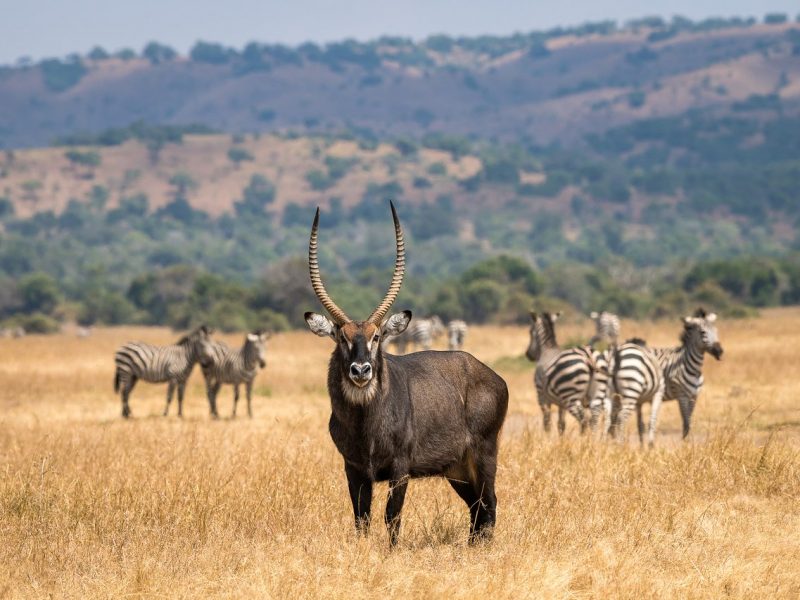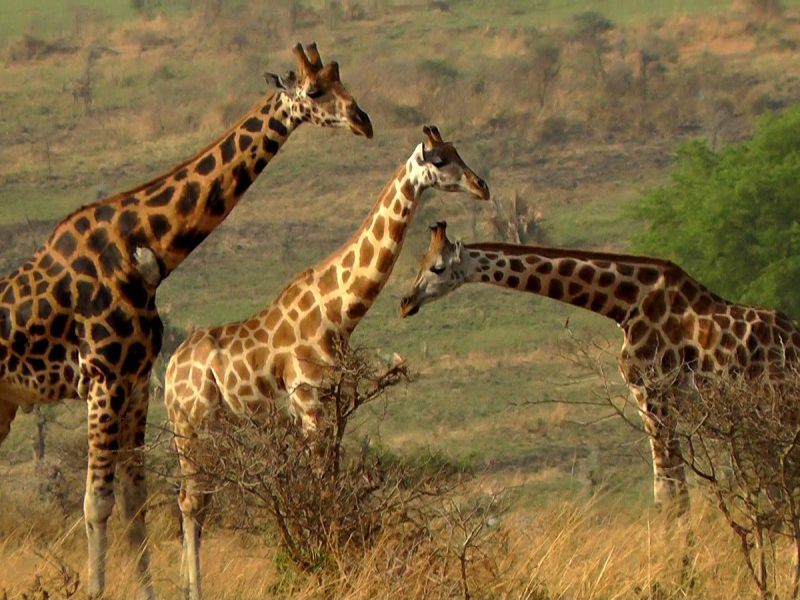Everything you Need to Know About your Kenya Safaris Holiday | Acacia Safaris
Welcome to Acacia Safaris Uganda ultimate Kenya safaris holiday guide. A Kenya safaris holiday offers the intrepid traveler the best that Africa has to offer. From the legendary Masai Mara and intriguing cultures to its pristine coastlines with tropical beaches. Curate your holiday experience and let us do the rest for you. It couldn’t be easier.
Trending Kenya Safari Holidays in 2022/23 | Acacia Safaris Uganda
3 Days Great Wildlife Migration Safari
On the 3 Days Great Wildlife Migration Safari, you will visit Maasai Mara Game reserve which is an area of preserved savannah wilderness in southwestern Kenya, along the Tanzanian border.
4 Days Maasai Mara Kenya Wildlife Safari
On the 4 Days Maasai Mara Kenya Wildlife Safari, you will visit Maasai Mara Game reserve which is an area of preserved savannah wilderness in southwestern Kenya, along the Tanzanian border.
On this Kenya safari, you will visit Lake Naivasha National Park which is famous for its millions of flamingos, other birds, and other wildlife animals. You will visit Nakuru National Park, you will visit.
On 6 Days Kenya Safaris Tour, you will visit Samburu Game reserve well known for numerous permanent springs and a wealth of wildlife, you will also visit Sweet Waters Game reserve in the Mt. Kenya region.
On the 6 Days Kenya Wildlife Safari you will visit Masai Mara Game reserve for wildlife viewing of the big five, you will visit Lake Naivasha and enjoy a boat ride, and you will visit Lake Nakuru national park for birding in Kenya
12 Days Kenya Uganda Safari Wildlife Safari and Gorilla Trekking Tour involves wildlife adventures in both Uganda and Kenya, Chimpanzee tracking in Uganda, Bird Watching, boat rides, and Mountain Gorilla Tracking.
Our Recommended Kenya Safaris Tour
Kenya Bush and Beach Safari with the family
It’s easy to see why so many visitors from all over the world come to Kenya to experience a truly unique African adventure in one of the world’s most primitive safari destinations. Begin a family safari in Kenya in Nairobi. It is an exciting and lively place and the fourth largest city in Africa.
You and your family/friends will discover Nairobi’s coffee culture, pristine nightlife, national museums, and the Karen Blixen Museum. Enjoy the beaches of Mombasa. Its feature is that the distance from the white side is long and the palm sways in the wind.
Kenya Safari Holiday and Tour Style
Kenya is one of the best places to beat the Big Five in Africa, including lions, leopards, buffaloes, elephants, and rhinos. For those who want to see all of these charismatic creatures (and more), Kenya’s good short safari groups are Masai Mara (lion, leopard, buffalo, elephant) and Lake Nakuru (black and white rhino).
Other safari destinations that are home to all or most of the Big Five include Tsavo East, Tsavo West, Amboseli, Laikipia Plateau, Samburu-Buffalo Springs-Shaba, and Mel, and to a lesser extent Shimba Hills. It is important to take note of the ongoing conservation efforts in Kenya to protect some of the largest and smallest species, including the elephant population.
Today, the David Sheldrick Wildlife Trust is the world’s most successful isolated elephant rescue and rehabilitation program and one of the leading wildlife and habitat conservation groups in East Africa. DSWT, founded in 1977 by Dr. Dame Daphne Sheldrake DBE, is rooted in nature and conservation in honor of her late husband, renowned conservation and forest ranger founders David Leslie and William Sheldrake MBE at Tsavo East National Park.
DSWT remains true to its principles and ideals and remains a sustainable and resilient organization. With the guidance of experienced and dedicated managers and the support of an active wildlife advisory board with lifelong experience in wildlife and the environment, the fund takes effective, long-term action.
Birding Safaris in Kenya
Kenya is one of only 15 countries in the world with over 1,000 registered bird species and ranks third on the African bird diversity list after the Democratic Republic of the Congo and Tanzania. The list includes two of the largest birds in the world (ostrich and Somali, now considered distinct species) and the largest flying creature (Korean squid), abundant birds of prey, colorful bee-eaters, and tigers. Includes an impressive array of parrots, parrots, and bridges. Bird watching is rewarding all over Kenya. For bird watchers, a well-planned two-week trip can create a list of 350-400 flights. This is a comparable figure around the world.
The open savannah in southern Kenyan reserves such as Amboseli and Masai Mara offers excellent introductions to birds common to East Africa, including beautiful purple pomegranates, purple drums, and African gray hornbeams. Rift Valley Lake is also great. Nakuru and Bogoria are, of course, known for their gorgeous flocks of flamingos, but the lesser known Naivasha and Baringo are certainly suitable for birding in general.
For regular African safari enthusiasts
For regular African safari enthusiasts, the region is of particular interest in the arid north, and Samburu-Buffalo Springs-Shaba is a highly arid rural species whose range is limited to inaccessible parts of Ethiopia and Somalia. For visitors with limited exposure to the rainforests of West and Central Africa, Kakamega Forest, and Saiwa Marsh protect dozens of forest species in the far east of the area.
For Kenya’s endemic or semi-native Drosophila, Alaboco-Sooke National Park near Watamu is home to the weaving of Clark, scorpion owls, helmeted gray-headed Moz, red-hot pipettes, and linen solar birds. The central highlands also have the geometry of many endemic species, most notably Shar Pei, Aberde Assisticola, and long-clawed Harter.
Kenya offers great birding all year round, but the high season runs from October to March, and immigrants from the Balearic Islands increase the population. This is also closely related to the rainy season in Kenya. During this time, many habitats abandoned the dull feathers of the eclipse and preferred a bright breeding color.
Adventure Safaris Tour Holidays in Kenya
Kenya offers many opportunities for adventurous travelers. For budget-conscious travelers, exploring a country by public transport can be an adventure in itself. Rift Valley Lake, like Lake Naivasha and Lake Baringo, offers numerous opportunities to visit the natural areas on foot or by boat.
The same goes for Kakamega National Park, Saiwanuma National Park, and part of the coast on the west side. For a more organized budget adventure, join a Kenyan truck safari to a large reserve or one of the occasional excursions to a secluded Lake Turkana in the northern desert bordering Ethiopia.
For those on a tight budget, the camel safari through the tiny Matthews Mountains in the vast Namnyak Wildlife Sanctuary is the way to go. Kenya safaris include horseback riding and excursions to several individual reserves on the Laikipia Plateau.
The main hiking destination is Mount Kenya, whose glacial peak is the second highest in Africa after Kilimanjaro. Scuba diving and snorkeling are available in all major coastal cities.
Why Safari in Kenya?
Often considered the ultimate safari destination, Kenya is arguably home to some of the continent’s most thrilling and thrilling national parks and nature reserves. The most famous of these is the unrivaled Masai Mara National Reserve, whose rolling grasslands support the extraordinary concentration of lions, Leopards, spotted hyenas, and other predators. It lasts from July to August and, depending on the season, until October. On the Mara River, hundreds of thousands of wildlife follow the dust flow manually from Tanzania’s neighboring Serengeti National Park, where you can see the world’s greatest wildlife attractions.
Amboseli National Park
Amboseli National Park is also less well known. Here you’ll see the continent’s most impressive and common herds of elephants traverse the dusty plains beneath snow-capped Kilimanjaro, the world’s tallest self-supporting mountain. The country is divided by the dramatic expanse of crevices dotted with jewel-like lakes. There is Lake Nakuru where prehistoric rhinos graze. Lake Bogoria is pale pink with over 1 million flamingos. Beautiful Lake Naivasha is bordered by a reed pond inhabited by birds and hippos.
Perhaps the most unique reserve in Kenya is the reserve north of the equator. Here, Laikipia, Samburu-Buffalo Springs, Mel, and others support a group of dryland experts on the southern border of the country, beautiful net giraffes, Grevy’s zebras, grotesque geraniums, and many colorful birds. Limited range.
Why do you like a safari in Kenya?
A good indicator of Kenya’s biodiversity is arguably better than the National Bird Checklist of over 1,000 species. This is the third place in Africa. This number is all remarkable when you realize that you are not in the top 20 continents. From the point of view of the population and the territory.
Kenya is probably one of the top five destinations in Africa. However, there are many things we can offer, not just Kenya safaris. Culturally, it is a fascinating mass of contrasts. One of the most advanced countries in Africa, with a very high level of education, a large middle class, world-class tourism facilities, and an industrial zone extending from the bustling capital. But outside the city, the dusty plains of Masai, Samburu, Turkana, and other pastors consider it one of the most important traditional African religions.
Beach Holidays
Next is the vibrant Indian Ocean coast. Over 500km of idyllic beach, with mysterious medieval ruins, dense tropical forests, and traditional coastal towns in the background. Offshore coral reefs and swirls of colorful fish are just as fun to divers and diverse as the country’s most common animals. Elsewhere, Kenya’s geographical diversity includes the vast ponds of Lake Victoria, the intimate coconut-fringed banks of the Galana River, and the dense tropical rainforests of Kakamega and Turkana (the largest desert in the world).
Contains dry wastelands around the lake) Afro pine mountains. The snow-covered meadows beneath Mount Kenya, the tormented volcanic thorns of the Gates of Hell, and, of course, the fascinating expanse of the African savannah dotted with protected acacias in the legendary game reserve.
Kenya Safari Destinations / Where to go for Wildlife Tours in Kenya?
Masai Mara is the most famous and most visited reserve in Kenya. Since it is protected as a reserve and not as a national park, Masai Mara is not managed by Kenya Wildlife Service but by the local authorities, namely District Councils. The protection of this area, among other factors, favoured re-population of the territory by the Maasai tribes, who by virtue of the reserve.
Amboseli National Reserve Kenya:
Amboseli lies immediately North West of Mt. Kilimanjaro, on the border with Tanzania. Amboseli was established as a reserve in 1968 and gazetted as a National Park in 1974. The Park covers 392 kms and forms part of the much larger 3,000 Kms Amboseli ecosystem. Large concentrations of wildlife occur here in the dry season, making Amboseli a popular tourist destination.
Samburu National Reserve Kenya:
Samburu, Buffalo Springs and Shaba are the most remote and inaccessible among the popular reserves located in Northern Kenya along the banks of the Ewaso Ngiro river. Shaba, the less visited of the three, is also the largest, with a total extension of 239 km. Samburu and Buffalo Springs are similar in surface area, 165 km and 128 km respectively. The area has been traditionally.
Lake Nakuru is a very strong alkaline lake 62 kms in extent. Since its gazetting in 1968 as a national park, both authorities and conservation organisations have kept on winning the battle to private property and human settling.
Created in 1950, Aberdare National Park is located in the Central Highlands. The landscape is made by the moorland, peaks and forest of the Kinangop Plateau in the South and the Salient rain forest in the East.
Mt. Kenya is an imposing extinct volcano dominating the landscape of the Kenyan Central Highlands, east of the Rift. Mt. Kenya lies about 140 km North, North-East of Nairobi with its Northern flanks across the Equator.











